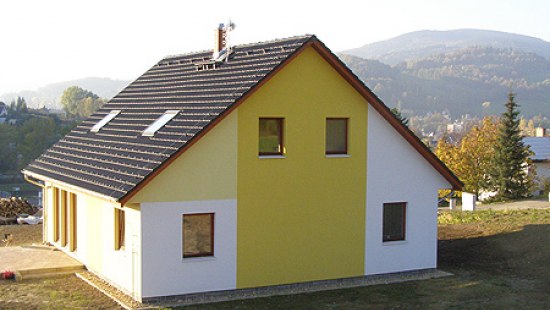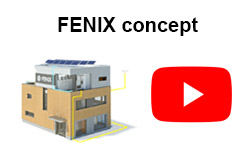The share of heating in energy consumption in low energy house (LEH)

Anyone considering the construction of a house today almost certainly assumes it will have a minimum of class B energy efficiency, or possibly be on the border between A and B, or even be wholly within the A band. In other words, it will be at least a low energy house (LEH), or almost a passive house. It is probable that no one today is planning buildings with worse heating characteristics. One of the choices which have to be made concerns the selection of an appropriate heating system. Much has been written about this issue, and much of that contains varying and sometimes even mutually contradictory recommendations. The reason for this is not only that the writers have different subjective viewpoints, but also different priorities which bias their arguments.
Heat pumps can be taken as an example. Heat pump sellers often argue that the high acquisition cost is quickly recouped due to the savings on heating which the pumps bring, but this argument just doesn't stand up in the case of LEH and passive houses. Heat pumps are ideal for e.g. historical buildings, as the Monument Care Department will not allow improvements to their heating systems, and the replacement of windows is of course out of the question. In these cases energy consumption is high, and heat pumps are certainly the correct solution. However, with low energy or even passive houses? The main motivation here is to sell the offered product, i.e. heat pumps.
On the other hand this behaviour is, one supposes, understandable, and the suppliers of other heating systems also behave in more or less the same way. It's up to the consumer to consider all the possibilities, listen to the arguments given, form their own opinion and make their decision on that basis.
The motivation of heat pump sellers is thus clear, although why expert design companies and specialists include these systems in their LEH and passive house designs is less so, especially as very often it brings them no profit. In this situation the afore-mentioned "different subjective viewpoint" comes into play. This group of specialists sees the passive house as not only a "house with cheap heating" but primarily an independent building with minimal dependence on the direct supply of energy. From their point of view heat pumps are therefore an ideal solution, as they are able to generate 3–4 kW of heating energy from 1 kW of input energy. The dependence of the building on energy for heating can thus be lowered by around 2/3. This is certainly a praiseworthy idea, but unfortunately it fails to take into account the economic side of things – i.e. the real return on investment. This is what is known as "savings at any price".
Let's evaluate the economic consequences of such a solution. FENIX has been monitoring several buildings with electric heating systems on a long-term basis and systematically recording their real operational costs (articles on the example buildings can be found here…). Because in these cases the energy used for heating is measured together with other consumption, the chosen homes were fitted with a secondary electricity meter which measured only the use of electricity for heating. In this way it was possible to gain substantiated data regarding the true costs of heating.
The building chosen for evaluation was a low energy family home situated right in Jeseník – i.e. in an area with quite a tough climate (more detailed information about this example building can be found here…). Electric floor heating (Ecofloor heating mats, ECOFILM heating foils) is used to heat the ground floor, while on the first floor direct heating convectors are installed. The whole system is regulated by BMR central regulation. The price of the whole turnkey heating system was 120 000 CZK.
Table depicting the share of heating in the total consumption of electrical energy
| Period | Consumption in kWh | Share of the high tariff in energy consumption | Heating (secondary electricity meter) | Share of heating to energy consumption | ||
| Low tariff | High tariff | From the low tariff | From total consumption | |||
| 10/2009–10/2010 | 9 419 | 1 107 | 10,5 % | 3 299 | 35,0 % | 31,3 % |
| 5/2011–5/2013 (2 years) | 16 607 | 2 208 | 11,7 % | 6 074 | 36,6 % | 32,3 % |
From the supplied data it is clear that heating makes up only 30–32 % of the total yearly consumption of electricity (!). If the user pays 30 000 CZK for their yearly consumption of electrical energy then a simple calculation tells us that their heating bill was 9 000 CZK, including VAT.
Let us now imagine that a heat pump was installed in this building. The acquisition cost of the whole heating system can be estimated as 250 000 CZK. Let's also imagine that thanks to the heat pump the heating costs were only a third of those for electric heating, so in this case they would be around 3 000 CZK per year. The yearly saving is thus 6 000 crowns. If we consider the difference in acquisition costs (250 000/120 000) then it can be seen that it will take 21 years to see a return on the investment into a heat pump! Objectively speaking, from the economic viewpoint heat pumps not a good investment for new buildings with good thermal characteristics as the economic return on the initial investment takes longer than the lifetime of the equipment. In contrast, the relation between investment and operating costs works out much better for electrical direct heating systems, whether they are large surface area systems such as floor or ceiling heating, or various types of radiant panels. The main reason for this is the relatively low acquisition cost, excellent regulability and the lower price of electrical energy for all home appliances.
The monitoring of energy consumption within this building also shows another interesting thing – the consumption of electricity during the high tariff period is 10.5 %. Previous data for other buildings typically showed only 3–5 % of electricity consumption during the high tariff. The increase in the amount of high tariff electricity is caused by the fall in the amount of energy consumed by heating, which is in operation only during the low tariff period. Because the low tariff energy consumption percentage declined it is logical that the high tariff percentage increased.





